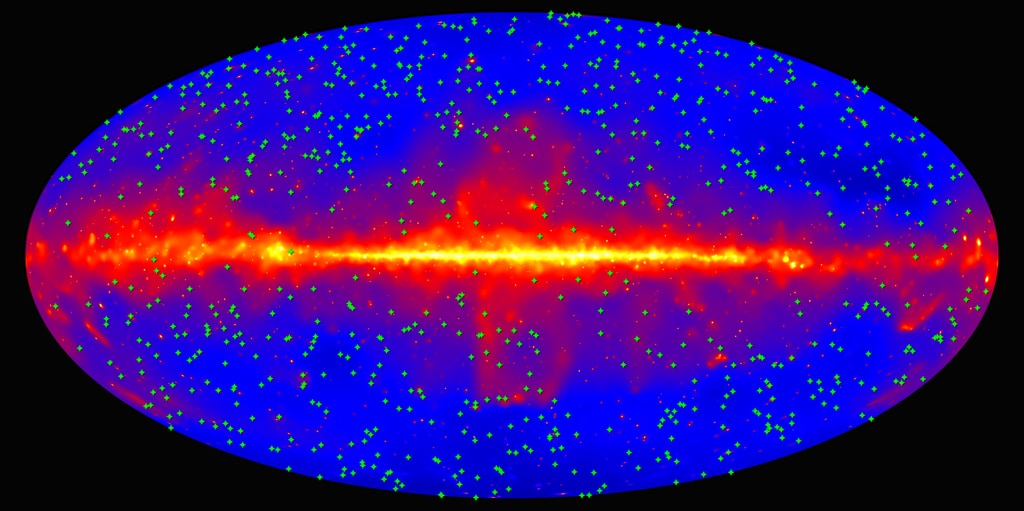
 Credit: NASA/DOE/Fermi LAT Collaboration
Credit: NASA/DOE/Fermi LAT Collaboration
Measuring the Darkness of Night
We all know night sky is dark. This obvious statement actually has profound cosmological implications. If the Universe were filled with stars and infinite in time and space, then the combined light from all those stars would make the sky at night as bright day. This cosmological realization is usually called "Olbers' Paradox" after Heinrich Wilhelm Olbers, who famously formulated the question in 1823. In reality, the night sky is not dark, but glows faintly with the light of all the stars created since the Big Bang. This glow serves as a record of the light emitted by all the stars that ever lived, so, by measuring this faint starlight, a history of star formation through cosmic time can be constructed. Measuring the total amount of starlight in the Universe may seem like an almost impossible task, but it's not. An estimate of the total amount of starlight can be obtained by observing how stellar photons interact with high-energy gamma-ray photons produced by supermassive black holes at the centers of distant galaxies called blazars. When gamma rays produced by these blazars collide with photons of starlight, some of the gamma rays are lost. By determining how many gamma-rays are removed, the amount of starlight between the black hole and us can be estimated. The first measure of the background starlight and how it varies with distance and time using gamma-ray emission from blazars was made in 2012 using maps of the sky accumulated by the Fermi Gamma-ray Space Telescope. Since that time, Fermi has continued to scan the Universe, bringing out ever more details of the cosmic gamma-ray sky. Scientists have now used these additional Fermi data to increase the number of gamma-ray blazars studied by almost a factor of 5, to put even firmer constraints on the total amount of starlight produced since the very first stars were formed. The image above shows the gamma-ray emission from the entire sky from nine years of Fermi observations. The image is in galactic coordinates, so that the bright plane of the Milky Way stretches from left to right near the middle of the image. The locations of the blazars used in the new study are marked by green crosses. The Fermi blazar measurements show that the number of stars forming in the Universe reached a peak about 10 billion years ago (about 3 billion years after the Big Bang) and has been declining since then. This new Fermi measurement is in good agreement with other attempts to measure the cosmic star formation history.
Published: December 3, 2018
<
HEA Dictionary ● Archive
● Search HEAPOW
● Other Languages
● HEAPOW on Facebook
● Download all Images
● Education ● HEAD
>

Each week the HEASARC
brings you new, exciting and beautiful images from X-ray and Gamma ray
astronomy. Check back each week and be sure to check out the HEAPOW archive!
Page Author: Dr. Michael F. Corcoran
Last modified Monday, 26-Feb-2024 17:36:46 EST


